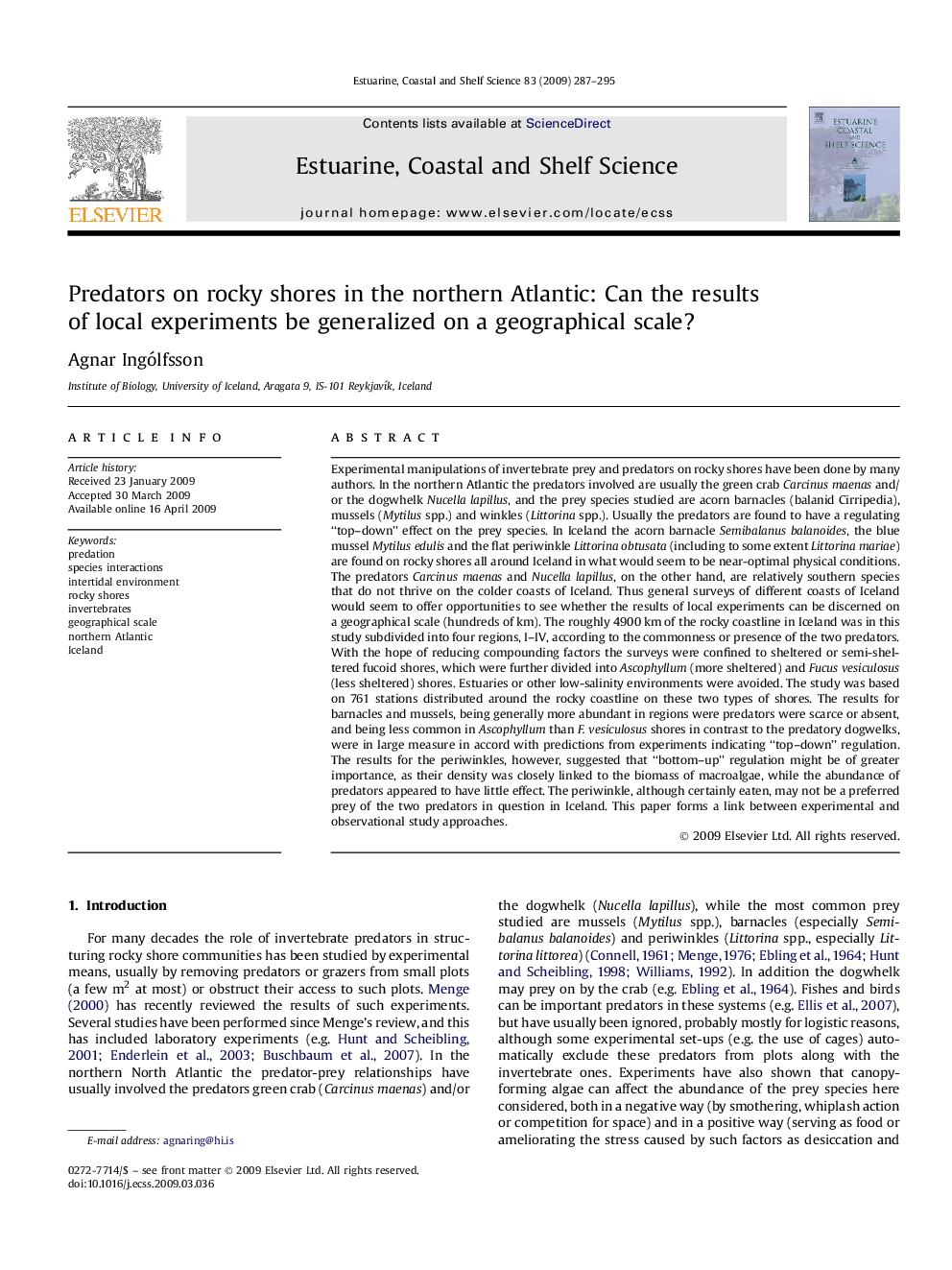| کد مقاله | کد نشریه | سال انتشار | مقاله انگلیسی | نسخه تمام متن |
|---|---|---|---|---|
| 4541213 | 1326713 | 2009 | 9 صفحه PDF | دانلود رایگان |

Experimental manipulations of invertebrate prey and predators on rocky shores have been done by many authors. In the northern Atlantic the predators involved are usually the green crab Carcinus maenas and/or the dogwhelk Nucella lapillus, and the prey species studied are acorn barnacles (balanid Cirripedia), mussels (Mytilus spp.) and winkles (Littorina spp.). Usually the predators are found to have a regulating “top–down” effect on the prey species. In Iceland the acorn barnacle Semibalanus balanoides, the blue mussel Mytilus edulis and the flat periwinkle Littorina obtusata (including to some extent Littorina mariae) are found on rocky shores all around Iceland in what would seem to be near-optimal physical conditions. The predators Carcinus maenas and Nucella lapillus, on the other hand, are relatively southern species that do not thrive on the colder coasts of Iceland. Thus general surveys of different coasts of Iceland would seem to offer opportunities to see whether the results of local experiments can be discerned on a geographical scale (hundreds of km). The roughly 4900 km of the rocky coastline in Iceland was in this study subdivided into four regions, I–IV, according to the commonness or presence of the two predators. With the hope of reducing compounding factors the surveys were confined to sheltered or semi-sheltered fucoid shores, which were further divided into Ascophyllum (more sheltered) and Fucus vesiculosus (less sheltered) shores. Estuaries or other low-salinity environments were avoided. The study was based on 761 stations distributed around the rocky coastline on these two types of shores. The results for barnacles and mussels, being generally more abundant in regions were predators were scarce or absent, and being less common in Ascophyllum than F. vesiculosus shores in contrast to the predatory dogwelks, were in large measure in accord with predictions from experiments indicating “top–down” regulation. The results for the periwinkles, however, suggested that “bottom–up” regulation might be of greater importance, as their density was closely linked to the biomass of macroalgae, while the abundance of predators appeared to have little effect. The periwinkle, although certainly eaten, may not be a preferred prey of the two predators in question in Iceland. This paper forms a link between experimental and observational study approaches.
Journal: Estuarine, Coastal and Shelf Science - Volume 83, Issue 3, 10 July 2009, Pages 287–295